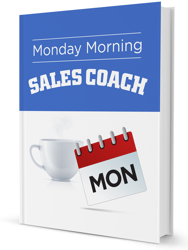Eliminate Your Competition Early
Change is difficult. Don’t let your prospect use it as an excuse not to buy from you.
When a company has a long-term relationship with a vendor, often it has developed processes around doing business with that vendor. In addition, close personal relationships are developed with vendor personnel that can be painful to sever.
Frequently salespeople are told, “We really like you guys, but it’s such a hassle to change suppliers that we’ve decided to stay where we are.” That’s one reason why nearly 25% of proposals go nowhere…the prospect decides to stay put. That’s called inertia or status quo and it’s the silent proposal killer.
Typically problems fall into the “fix it” or “forget it” category. It’s often easier, less painful, to do nothing than going through the potential of changing suppliers. To get problems solidly into the “fix it” category, salespeople need to be exceptional at uncovering the prospect’s pain, as pain is the accelerator for change. No pain, no change. (See Core Competencies #39, 40, and 41.)
Hearing “we’ve decided not to make any changes” is especially frustrating after you’ve spent a good deal of time (and resources) qualifying the prospect, researching alternatives, developing a proposal, getting staff involved, and making the presentation.
The key here, when you realize that change will be difficult or old relationships will be tough to discard, is to face the problem head on and deal with it early in the sales process. So when a prospect tells you they’re thinking about making a change, “challenge” them politely with the following:
“I’m glad there might be an opportunity for us to help you, but you know, change is difficult. Your current vendor is well respected in the industry. Why would you want to change?”
Their answer, when asked this low-key question, will tell you volumes. If they don’t respond immediately with some convincing reason as to why they’d want to go through the hassle of change, you should think twice about spending a lot of time on this “opportunity.”
Another approach might be to employ the “biggest concern” tactic, as follows:
“My biggest concern is that we’ll spend a lot of time meeting and exchanging ideas, but at the end of the day, you’ll tell me that ‘change is difficult and we’ve decided to stay with out current vendor.’ What’s the likelihood of that happening?”
Bottom line is that if you’re going to “lose,” lose early.
Self-Study Assignment: How often does this situation happen to you? Even if it’s infrequent, this is a great thing to say to a prospect early on to get him to begin a discussion of his business challenges (pain). Learn the script and use it on your next call.


